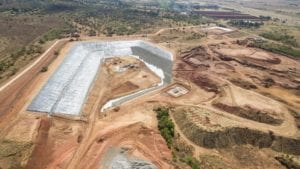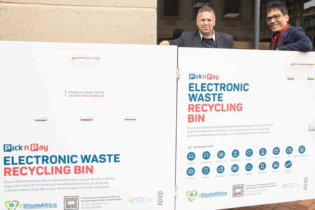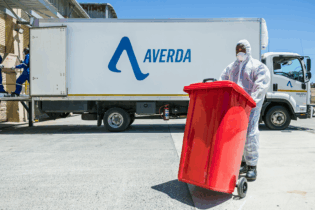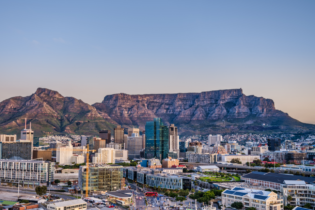As the first high-hazardous landfill to be constructed in Vereeniging, Gauteng, in 24 years, Averda’s Vlakfontein Class A landfill has been built to the latest local and international standards. From planning through to operation, the Averda team is proving that the age of the environmental afterthought is long gone.
The landfill is located on a former brickmaking quarry and, according to Reg Gerber, national landfill manager, Averda South Africa, the site was specifically selected because of this history. “During our environmental impact assessment, we looked at a range of things for the particular sites we were considering and this one came out tops in terms of the composition of the site itself. Because it was previously a brickmaking quarry for many years, the whole area is actually underlaid by significant layers of clay, which is what makes it ideal for a landfill site.”Built for the environment
In addition to the prime positioning, the landfill sits on top of a complex combination of layered materials aimed at ensuring that no waste seeps into the soil and contaminates the environment. This is something that Gerber isparticularly proud of. “Probably the most important par t of this landfill site is the design of liners but because you can’t see it, its importance is hard to fully appreciate. The landfill is underlaid by a combination of materials that are 1.2 m deep. The materials include geotextiles, compacted clay, high-density polyethylene and gravel,” Gerber explains. Neville Chetty, technical manager, Averda, adds: The liner system makes provision for the collection and drainage of leachate off the primary 2 mm liner and for leakage detection and collection between the primary 2 mm liner and secondary 1.5 mm geomembrane liners. Through the set-up of these layers and the choice of materials, we have made every effort to ensure that the waste and the leachate produced in our landfill will not come into contact with the environment.” The leachate from the landfill’s Cell 1 site, which was commissioned in 2016, is fed into two tanks. Once the tanks are full, the leachate is pumped up to the leachate dam. To manage the odours that come off the leachate dam, Averda has employed extensive air-quality monitoring protocols, which include high-tech gas probes and sentinels, as well as ongoing dust monitoring. “In the event of a complaint, we have real-time data available to ascertain the nature of the complaint so that operational adjustments can be immediately undertaken,” Chetty says.
Strict controls
Being a Class A landfill site, Averda employs strict control measures for those looking to dispose of hazardous waste at Vlakfontein. “We have a delay period for hazardous waste streams, and waste generators or waste management companies would need to give us anything from 24 to 72 hours’ notification or forewarning if they wanted to drop waste off at Vlakfontein,” Gerber explains. This forewarning allows landfill staff to plan for the load by sending a representative out to meet with the waste management company or generator to complete the appropriate paperwork. This includes documents such as a toxicity sheet, and the main aim of the exercise is to determine what is in the waste, how it was generated, and what constituents one would expect to see in it. “We will also take a sample and send it for analysis. Once the results come back, we know what we’ve got to do with it because we’ve got to treat it in a certain way. Different types of hazardous waste require different treatments for them to be disposed of correctly, which is why we insist on notification ahead of time. “Our on-site laboratory is capable of handling most waste acceptance confirmatory procedures, but we do use accredited external laboratories for the waste classification analysis, as the independence of the results is an important aspect,” he explains. Once the waste arrives on-site, it goes through further sampling and testing to determine if it is indeed what the waste company says it is. If the on-site laboratory picks up on any discrepancies,the waste carrier will be turned away.
Relationship management
Chetty is particularly proud of the relationships Averda has built with the neighbouring community. “We have been engaging the local community from the very beginning of the Vlakfontein site journey. Today, we have a constructive and positive working relationship, whereby issues or concerns raised by the community are addressed immediately.”The company recently invited the community onto the landfill to see how it operates, as well as showcase the range of technologies and controls Averda has in place to ensure that both the community and the environment are protected. Looking ahead, Gerber notes that this waste leader will continue to build on what they have created. “From the planning phase, the intention was to create a one-stop waste park, which envisages separation of waste, recycling, waste-to-energy and treatment, with only a fraction of waste being disposed of,” Gerber explains. In the next five years, Averda plans to construct two additional waste cells, as well as a liquid hazardous waste plant that will treat most liquid hazardous waste streams, including leachate and effluent.








